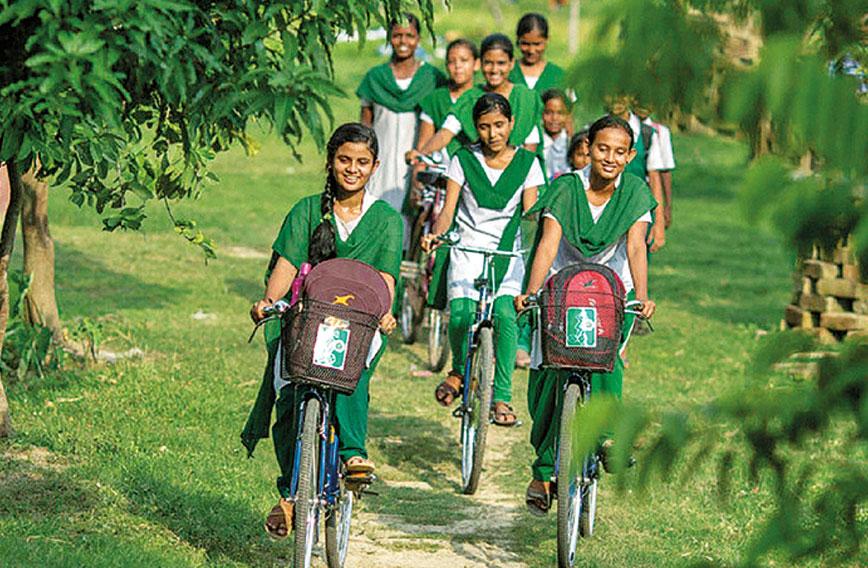
SUBIR ROY
The Assam government’s recent drive against child marriage, which has led to several thousand arrests, has created a turmoil in a section of society. There are hugely disturbing reports that teenage mothers-to-be are avoiding going for medical check-ups or hospital visits out of fear that this will bring the police to their doorstep looking for their husbands and other elderly close relations like parents-in-law.
Newly arrived babies are also being denied medical attention out of the same fear of their parents who are not taking them for medical check-ups. Some pregnant young girls have even gone to the extent of seeking out medical people they trust and asking for abortions in order not to have to go through the impending childbirth. As a result of all this, ante-natal visits to some public hospitals have dropped. ASHA workers who visit homes to track pregnancies and manage inoculation have been caught in the crossfire and visits to anganwadi centres to meet them have also dropped.
The official reason given for the crackdown is that it is part of the attempt to bring down maternal and infant mortality rates which are often caused by girls marrying and bearing children too early. Early marriages should indeed be avoided but the issue is if the way to bring this about is by creating fear of falling foul of the law. Using official machinery and the long arm of the law to address the issue of underage marriages appears to enjoy the support of the more educated and better-off sections of the state’s populace.
The existing body of research points in a different direction. There is a degree of consensus that the way to address the issue of early marriage is to strive for girls to be better educated and achieve a degree of financial independence by earning. Once this happens, girls will not only cease to be a financial burden on their families but may even be able to help the family out financially. It is often the case that parents get their daughters married early in order to have one less mouth to feed.
Available data indicates that the incidence of child marriage is indeed high in Assam. But successive rounds of the National Family Health Survey indicate that there has been a steady decline in the practice over the years. As child marriages are declining, women are bearing fewer children. According to 2019-20 data, the fertility rate has gone down to 1.9, that is, below the replacement level. You could hardly ask for more.
Data also indicates something more significant. High levels of underage marriage are prevalent among the minority communities like Muslims and Christians but they also happen to belong to the poorer sections of society. It is significant that as people get better off they tend to move away from early marriage. Also, maternal mortality is crucially affected by anaemia which has nothing to do with the age of marriage but everything to do with poverty and undernourishment. This, plus the reasons cited above as to why parents get their daughters married early, indicates that instead of letting loose the police on the practitioners of early marriage, the state should improve their incomes. That will achieve the desired result.
Fortunately, there is an example of a state government initiating a programme to address the economic roots of early marriage — the Kanyashree programme of West Bengal. Started a decade ago, it offers financial incentives to poor girls so that they keep going to school and do not get married too early. By seeking to prevent early marriage, the scheme targets improvement in infant and maternal mortality rates which go down as child bearing age goes up. Along with these aims, the scheme also reduces chances of child trafficking. Poor parents will not be tempted to let their young daughters go if they cease to be a financial burden on the family.
Under the scheme a girl in the 13 to 18 age group and in Classes 8-12 or an equivalent vocational training programme gets an annual scholarship of `1,000 so long as she keeps going to school and remains unmarried. Plus, on reaching 18 the unmarried girl gets a one-time grant of `25,000. The state is paying the dowry which the parents would get if they got their daughter married!
After being in place for a decade, it can be said that the scheme works, and has in a way become a part of the educational and social landscape. Over 1,800 institutions are registered under the scheme and 2.7 million applications have been registered under it.
Kanyashree has won international recognition. It secured the 2017 United Nations Public Service Award, becoming one of three schemes across the world to be placed in Category I for “reaching the poorest and most vulnerable through inclusive service and participation”. The scheme is easy to access. What is more, it is efficiently implemented, something that cannot be said about many government schemes. Because of all its merits it has been adopted as a model for the Central government’s Beti Bachao Beti Padhao scheme.
One reason why Kanyashree has worked is that it uses information technology for implementing as well as monitoring the work done. It is delivered through a dedicated web-based portal www.wbkanyashree.gov.in which reduces paperwork and response time. UNESCO is a partner for the project and keeps an eye on it.
To enrol for Kanyashree a girl has to fill in a form and get it certified by the head of her educational institution. When this form is presented at a bank branch it opens a ‘zero balance no-frills account’ and uploads the data. If the application is approved, payment is transferred to this account. All primary data on the scheme is entered by educational institutions. The head of a school affirms that the procedure for completing forms and registration is hassle-free. The school’s database on the portal is updated weekly and leaves those who interact with the scheme satisfied.
To put it simply, to help girls carry on with their studies and not marry too early it is schemes like Kanyashree which deliver and make all who deal with them happy. As girls marry later, maternal and infant mortality rates fall. Along with all this the girls’ families are financially a bit better off. This is the way to go, not by letting the police loose on hapless victims of inherited social and economic realities.
Subir Roy is a senior journalist based in Kolkata.
Comments
Currently there are no Comments. Be first to write a comment!




